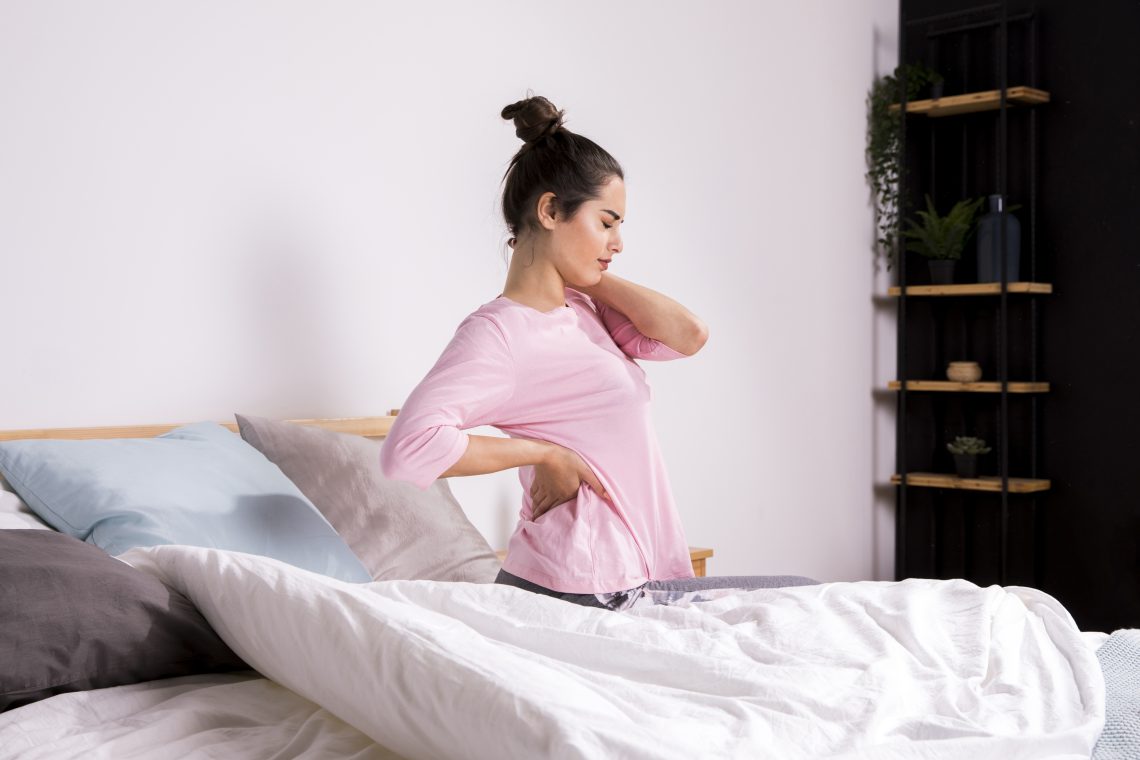Sciatica pain can make everyday life difficult, but one of the biggest challenges people face is getting a good night’s sleep. The sharp, shooting pain that runs from the lower back down the leg often worsens at night when you’re lying in bed. Without proper rest, your body struggles to heal, and your pain may even feel worse the next day.
The good news is that by making simple adjustments to your sleeping position, lifestyle, and nighttime routine, you can reduce discomfort and finally get the rest your body needs. In this article, we’ll explore how to sleep better with sciatica pain, along with proven tips for long-term relief.
What is Sciatica Pain?
Sciatica occurs when the sciatic nerve the longest nerve in your body becomes irritated or compressed. This nerve runs from your lower back, through the hips, buttocks, and down each leg. Compression may be caused by conditions such as a herniated disc, spinal stenosis, or injury.
The pain often feels like:
- Shooting or burning pain in one leg
- Tingling or numbness
- Pain that worsens when sitting or lying down
- Difficulty sleeping due to discomfort
If left untreated, sciatica can become chronic. For more insights, check out our detailed guide on How to Fix Sciatica Pain.
Why Sciatica Pain Gets Worse at Night
You might notice your pain feels sharper at night. This is because:
- Sleeping positions may put pressure on the lower back or hips.
- Inactivity reduces blood circulation, making pain signals stronger.
- Poor mattress or pillow support increases strain on the spine.
- Stress and fatigue can make you more sensitive to pain.
Understanding these triggers is the first step to improving sleep.
Best Sleeping Positions for Sciatica Pain
Finding the right sleeping position can reduce nerve pressure and provide comfort.
1. Sleeping on Your Side with a Pillow Between the Knees
Lie on your side and place a firm pillow between your knees. This aligns your spine and reduces strain on your lower back.
2. Sleeping on Your Back with Elevated Knees
If you prefer sleeping on your back, place a pillow under your knees to keep your spine neutral and relieve nerve pressure.
3. Fetal Position
Curling up gently on your side can open up the spaces between vertebrae, reducing compression on the sciatic nerve.
For more natural techniques to ease discomfort, see How to Relieve Sciatica Pain Naturally.
Mattress and Pillow Tips
- Use a medium-firm mattress to support the spine.
- A memory foam or orthopedic pillow can provide proper neck alignment.
- If your mattress is too soft, place a firm topper for extra support.
Nighttime Habits for Pain-Free Sleep
Good sleep hygiene can significantly improve your quality of rest.
- Stretch Before Bed
Gentle stretches relax tight muscles around the lower back and hips. Try simple yoga poses like child’s pose or knee-to-chest stretch. - Apply Heat or Cold Therapy
- A heating pad before bed relaxes muscles.
- An ice pack reduces inflammation.
- Stay Hydrated
Dehydration may worsen muscle cramps and pain. If you’re wondering how dehydration can affect headaches too, read Can Dehydration Cause Headaches. - Practice Relaxation
Deep breathing or meditation helps reduce stress, which otherwise makes nerve pain worse. If stress also gives you neck discomfort, check out Can Stress Cause Neck Pain.
Lifestyle Changes to Improve Sciatica and Sleep
- Maintain Good Posture: Poor posture during the day can increase nighttime pain.
- Stay Active: Light walking and stretching keep the spine flexible.
- Massage Therapy: Gentle massage eases tension and improves circulation.
- Avoid Heavy Meals Before Bed: Gastric discomfort can worsen pain signals.
When to Seek Medical Help
While most people find relief through posture changes and home remedies, see a doctor if you experience:
- Severe pain not improving with rest
- Weakness or numbness in the leg
- Loss of bladder or bowel control
These could indicate serious nerve compression needing medical attention.
Final Thoughts
Sleeping with sciatica pain can be frustrating, but with the right position, supportive bedding, and healthy lifestyle habits, you can significantly improve your sleep quality. Try side sleeping with a pillow between your knees, practice gentle stretches before bed, and manage stress to reduce nighttime pain.
Remember, better sleep is not only about comfort it’s also about giving your body the chance to heal. Combine these home strategies with long-term management techniques to keep sciatica under control and wake up refreshed.
For more guides on sciatica and natural pain management, don’t miss How to Get Relief from Sciatica Back Pain






